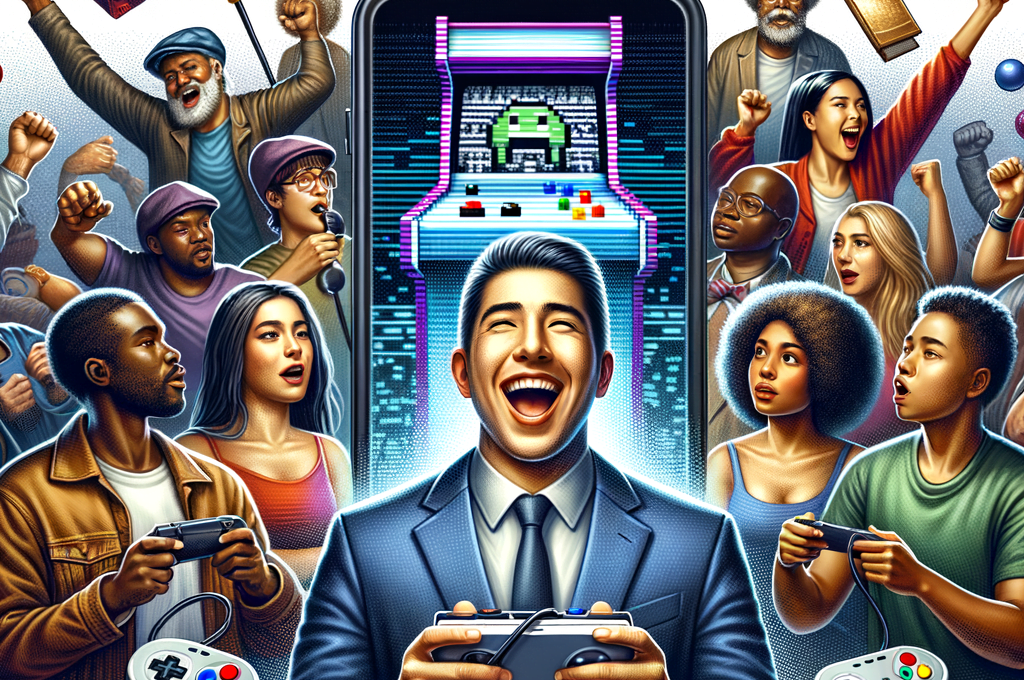In recent years, the mobile gaming industry has seen a significant surge in popularity. One of the most intriguing trends within this space is the revival of classic games in a mobile format. This phenomenon taps into the powerful emotion of nostalgia, allowing players to relive their favorite gaming moments from the past on modern devices. This article explores the intersection of mobile gaming and nostalgia, examining how classic games are being reimagined for a new generation of players.
The Rise of Mobile Gaming
Mobile gaming has grown exponentially over the past decade. According to a report by Newzoo, the global mobile gaming market was valued at $77.2 billion in 2020, accounting for nearly half of the total gaming market. The convenience of playing games on smartphones and tablets has made mobile gaming accessible to a broader audience. This accessibility has paved the way for the resurgence of classic games, as developers recognize the potential to attract both new and returning players.
Nostalgia: A Powerful Emotional Driver

Nostalgia is a potent force that can evoke strong emotional responses. It is often associated with positive memories and a longing for the past. In the context of gaming, nostalgia can transport players back to their childhood or adolescence, rekindling fond memories of playing their favorite games. This emotional connection is a key factor in the success of classic game remakes and re-releases on mobile platforms.
Examples of Classic Games on Mobile
Several classic games have been successfully adapted for mobile devices, capturing the hearts of both old and new players. Some notable examples include:
- Super Mario Run: Nintendo’s iconic plumber made his mobile debut in 2016 with Super Mario Run. The game retains the classic platforming elements while introducing new mechanics suited for touch controls.
- Sonic the Hedgehog: SEGA’s beloved blue hedgehog has also found a new home on mobile devices. The mobile version of Sonic the Hedgehog offers the same fast-paced gameplay that fans remember from the original.
- Final Fantasy: Square Enix has released several Final Fantasy titles on mobile, including remakes of classic games like Final Fantasy VII and Final Fantasy IX. These mobile versions often feature enhanced graphics and additional content.
Case Study: Pokémon GO
One of the most successful examples of leveraging nostalgia in mobile gaming is Pokémon GO. Released in 2016, Pokémon GO combines augmented reality (AR) technology with the beloved Pokémon franchise. The game allows players to catch Pokémon in the real world using their smartphones. The initial success of Pokémon GO can be attributed to the nostalgia factor, as it brought back memories of playing Pokémon games on Game Boy and watching the animated series. Within the first month of its release, Pokémon GO was downloaded over 100 million times, generating $200 million in revenue.
The Role of Technology in Reviving Classics
Advancements in technology have played a crucial role in the revival of classic games on mobile platforms. Improved graphics, touch controls, and cloud gaming services have made it possible to deliver a high-quality gaming experience on smartphones and tablets. Additionally, the widespread availability of mobile devices ensures that these classic games can reach a global audience. Developers can also leverage social media and online communities to promote their games and engage with fans, further enhancing the nostalgic appeal.
Challenges and Considerations
While the revival of classic games on mobile platforms offers numerous benefits, it also presents certain challenges. Developers must strike a balance between preserving the original gameplay experience and incorporating modern features. Additionally, there is the risk of alienating long-time fans if the mobile adaptation deviates too much from the original. Monetization strategies, such as in-app purchases and ads, must be carefully implemented to avoid detracting from the player experience.
Conclusion
The resurgence of classic games on mobile platforms is a testament to the enduring appeal of nostalgia. By reimagining beloved titles for modern devices, developers can tap into a powerful emotional connection with players. The success of games like Pokémon GO and Super Mario Run demonstrates the potential of this approach. As technology continues to evolve, we can expect to see even more classic games making a comeback in the mobile gaming space. Ultimately, the fusion of nostalgia and mobile gaming offers a unique opportunity to bridge the gap between generations of players, creating a shared experience that transcends time.
Question and Answer Section
Q: Why are classic games being revived on mobile platforms?
A: Classic games are being revived on mobile platforms to tap into the powerful emotion of nostalgia, attract both new and returning players, and leverage the widespread accessibility of mobile devices.
Q: What are some examples of classic games that have been adapted for mobile devices?
A: Notable examples include Super Mario Run, Sonic the Hedgehog, and several Final Fantasy titles. These games retain their original charm while incorporating features suited for mobile gameplay.
Q: How has technology contributed to the revival of classic games on mobile?
A: Advancements in graphics, touch controls, and cloud gaming services have made it possible to deliver high-quality gaming experiences on mobile devices. Social media and online communities also play a role in promoting these games and engaging with fans.
Q: What challenges do developers face when adapting classic games for mobile platforms?
A: Developers must balance preserving the original gameplay experience with incorporating modern features. They also need to implement monetization strategies carefully to avoid detracting from the player experience and risk alienating long-time fans if the adaptation deviates too much from the original.


